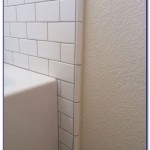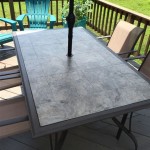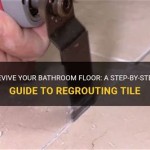Can You Put Vinyl Flooring Over Asbestos Tiles? A Comprehensive Guide
The question of whether vinyl flooring can be installed over existing asbestos tiles is a frequent one, particularly when dealing with older homes and buildings. The presence of asbestos, a known carcinogen, introduces complexities that demand careful consideration and adherence to safety protocols. While covering asbestos tiles with new flooring might seem like a straightforward solution to avoid costly and potentially hazardous removal, it's essential to understand the potential risks, regulations, and recommended procedures involved. This article provides a detailed explanation of the factors influencing this decision, outlining both the benefits and drawbacks of covering asbestos tiles with vinyl flooring.
The decision hinges on several critical aspects: the condition of the existing asbestos tiles, local and federal regulations regarding asbestos abatement, the type of vinyl flooring being installed, and the potential for disturbance during the installation process. Each of these factors needs to be carefully evaluated to ensure that the chosen approach minimizes the risk of asbestos fiber release, thereby protecting the health of the installers and future occupants of the building. Ignoring these considerations can lead to serious health consequences and legal liabilities.
Asbestos-containing materials (ACMs) were commonly used in building construction throughout much of the 20th century due to their fire-resistant and durable properties. Asbestos tiles, specifically, were a popular choice for flooring in residential and commercial buildings. However, the dangers associated with asbestos exposure became increasingly apparent, leading to regulations aimed at controlling its use and preventing its disturbance. Understanding the history of asbestos use and the subsequent health concerns is crucial for making informed decisions about managing ACMs in existing structures.
Understanding the Risks of Disturbing Asbestos Tiles
The primary risk associated with asbestos tiles is the potential for the release of asbestos fibers into the air. These microscopic fibers, when inhaled, can lead to serious and often fatal diseases such as asbestosis (a chronic lung disease), lung cancer, and mesothelioma (a cancer of the lining of the lungs, abdomen, or heart). The risk is directly related to the friability of the asbestos material, meaning its ability to be crumbled or reduced to powder by hand pressure. While asbestos tiles are generally considered non-friable when intact, they can become friable if they are damaged, broken, or subjected to abrasive actions during flooring installation.
Even seemingly minor disturbances, such as drilling, sanding, or scraping, can release asbestos fibers. The age and condition of the tiles play a significant role. Older tiles may become brittle and more prone to breakage. If the existing tiles are already cracked, broken, or loose, the risk of fiber release is substantially higher. Therefore, a thorough assessment of the tiles' condition is a necessary first step before considering any type of flooring installation over them.
Furthermore, the installation method itself can contribute to the risk. Some vinyl flooring installations require the use of adhesives that may react with the asbestos tiles, causing them to degrade and release fibers. Other methods, such as nailing or screwing, can directly penetrate the tiles, creating a pathway for fiber release. It's crucial to select installation techniques that minimize the potential for disturbing the existing asbestos material.
Regulations and Recommendations for Dealing with Asbestos
Federal regulations, primarily enforced by the Environmental Protection Agency (EPA) and the Occupational Safety and Health Administration (OSHA), govern the handling and disposal of asbestos-containing materials. These regulations aim to protect workers and the public from asbestos exposure. State and local regulations may be even stricter, often requiring specific permits and certifications for asbestos abatement activities. It is imperative to be familiar with the applicable regulations in your jurisdiction before commencing any work that could potentially disturb asbestos.
Generally, disturbing more than a certain amount of asbestos-containing material (often one square foot) triggers specific regulatory requirements. These requirements may include notifying regulatory agencies, using licensed asbestos abatement contractors, implementing specific work practices to control fiber release, and properly disposing of asbestos waste at approved landfills. Failure to comply with these regulations can result in hefty fines and legal repercussions.
The EPA generally recommends that asbestos-containing materials be left undisturbed if they are in good condition and not likely to be damaged. This approach, known as "encapsulation," can be a viable solution for managing asbestos tiles. Covering the tiles with vinyl flooring can be considered a form of encapsulation, provided it is done correctly and does not create a disturbance. However, it's essential to remember that encapsulation does not eliminate the asbestos; it merely contains it.
Encapsulation with Vinyl Flooring: Best Practices and Considerations
If, after careful consideration and adherence to all applicable regulations, the decision is made to install vinyl flooring over asbestos tiles, certain best practices should be followed to minimize the risk of asbestos fiber release. These practices focus on proper preparation, appropriate installation methods, and diligent cleanup.
Firstly, thorough preparation is essential. This includes carefully cleaning the existing tiles to remove any loose debris or dirt. Any loose or damaged tiles should be secured or carefully removed, following proper asbestos abatement procedures. A sealing agent can be applied to the existing tiles to further encapsulate them and prevent fiber release. This sealing agent should be specifically designed for use with asbestos-containing materials and should be applied according to the manufacturer's instructions.
Secondly, the choice of vinyl flooring and installation method is critical. Floating vinyl flooring, which doesn't require adhesives or fasteners that penetrate the existing tiles, is often the preferred option. Sheet vinyl flooring, which is installed as a single piece, can also be a good choice, as it minimizes the number of seams and potential points of disturbance. However, if adhesives are used, they should be low-VOC and compatible with asbestos tiles. Avoid using installation methods that involve nailing, screwing, or grinding the existing tiles.
Thirdly, proper cleanup is essential after the installation. Use a HEPA (High-Efficiency Particulate Air) filtered vacuum cleaner to thoroughly clean the work area. Dispose of any debris, including cut vinyl flooring scraps, in accordance with local asbestos disposal regulations. Damp-wipe all surfaces to remove any residual asbestos fibers. Wear appropriate personal protective equipment (PPE), such as a respirator and disposable coveralls, during the installation and cleanup process.
It's important to note that even with these precautions, there is always some risk of asbestos fiber release during the installation process. Therefore, it's generally recommended to hire a qualified asbestos abatement contractor to perform the work. These professionals have the training, experience, and equipment necessary to handle asbestos-containing materials safely and effectively. They can also ensure compliance with all applicable regulations.
In summary, while it is possible to install vinyl flooring over asbestos tiles, it is a complex issue that requires careful consideration, adherence to regulations, and the implementation of best practices. The decision should be based on a thorough assessment of the risks, regulations, and the condition of the existing tiles. Consulting with qualified asbestos professionals is strongly advised to ensure the safety of everyone involved.

Can I Put A New Floor Over Asbestos Tiles Branch Environmental

The Truth About Asbestos Vinyl Flooring Chemcare

How To Seal Asbestos Tiles Hunker

How To Waterproof A Basement

How Can I Easily Safely And Ly Cover Asbestos Flooring

How To Install Tile Over Asbestos Ehow

Marmoleum Over Possibly Asbestos Containing Vinyl Tile

Asbestos Floor Tile Is It Safe To Remove On Your Own

Do You Have Vinyl Asbestos Floor Tiles

Asbestos Floor Tiles 101 What To Know About This Old Home Hazard Bob Vila
Related Posts








